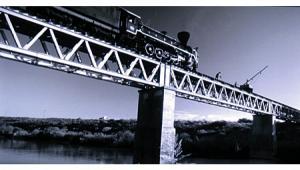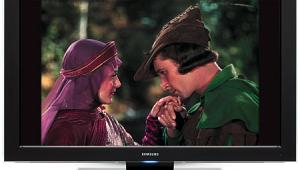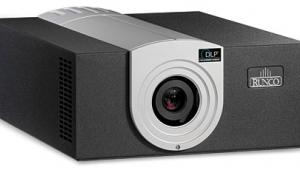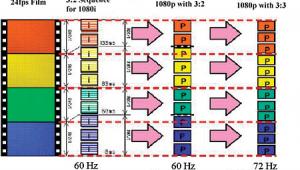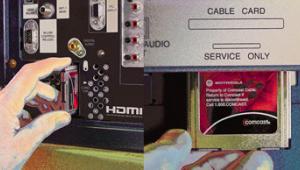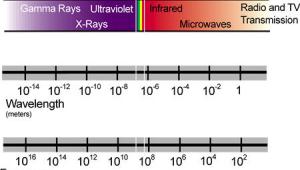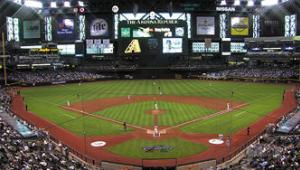MPEG-4 EVER
MPEG-4 Advanced Video Coding (AVC) is a next-generation video codec (coder/decoder) that's about to change the face of digital television—slimming it down, enabling it to move into narrower channels, and probably changing how it looks. I can almost see your eyes glazing over: Lucy, you got some 'splainin' to do.
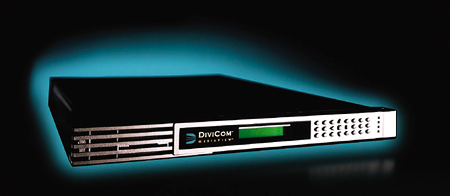
Most folks who know anything at all about DTV visualize a grid of pixels or lines of resolution. The more savvy videophile who's bought a progressive-scan DVD player—and who knows how it works—thinks in terms of frame rates, 3:2 pulldown, and video artifacts.
These are all valid ways to think about DTV, but there's another factor to consider in addition to pixels, lines, and the scanning system: the codec that underlies it all. The codec determines how the signal is encoded, decoded, and compressed—in other words, which data are discarded and which affect what you see on the screen.
Compression brings efficiency, and that, in turn, enables DTV to flow into our homes through various pipelines—antenna, cable, satellite, broadband, even dial-up. It also has a strong impact on DTV hardware's perceived performance. The trade-off between efficiency and quality is what's about to turn MPEG-4 AVC into a front-burner videophile issue.
This up-and-coming codec is quietly but surely becoming a major player in satellite- and disc-delivered HDTV. Yet few digital-era viewers know what it is or how it works. Until recently, I was one of the great unwashed, and it was partly out of shame and curiosity that I decided to become better informed on the subject.
MPEG Who?
Let's back up. Why compress at all? Who are these MPEG people? How specifically does MPEG-4 AVC differ from other codecs? And what, finally, will it look like on your big screen?
DTV cries out for compression. Uncompressed DTV lives only in the pro sphere. Like me, DTV signals are naturally fat, lazy creatures. Also like me, DTV signals have slimmed down considerably, thanks to a dietary regimen created by a squadron of experts.
In this case, the experts are Moving Picture Experts Group (MPEG), established in 1988 as a working group of ISO, the International Organization for Standardization. Based in Geneva, Switzerland, ISO brings together standards from 148 nations. An average MPEG meeting attracts around 300 experts drawn from 200 companies operating in 20 nations. This ain't just a bunch of techies having a food fight.
MPEG has promulgated a whole family of open standards for coding audio and video. Here's a quick overview:
> MPEG-1 determines how video is compressed on CD-ROM and VideoCD, the low-quality forerunners of the existing DVD format. As an unintended side effect, its MP3 (MPEG-1, Layer 3) audio codec set off the file-sharing revolution.
> MPEG-2 is a high-quality codec used in off-air, cable, and satellite DTV, as well as DVD.
> MPEG-4, formally known as Coding of Audiovisual Objects, was initially supposed to be a more efficient codec for multimedia and the Web—although its new AVC variation is about to expand into higher-quality video applications.
> MPEG-7 is the Multimedia Content Description Interface. It codes metadata, or data about data. It filters, searches, and manages information.
> MPEG-21 is the Multimedia Framework that defines digital content (video, soundtracks, subtitles, URLs) and its users. It's designed to control content throughout the delivery chain, including digital-rights management.
A Tale of Two MPEGs
For our video-related discussion, the only kinds of MPEG that matter are numbers 2 and 4. MPEG-4 is not currently the accepted standard in digital video compression. That would be MPEG-2. But MPEG-4 is more efficient—it compresses the signal more, doing more with fewer bits.
 In the best of all possible worlds, the bit bucket would never run dry, and we'd all be stunned at the beauty of uncompressed DTV. In the real world, though, every application has its own bandwidth limitations, and DTV at a low data rate is better than no DTV at all.
In the best of all possible worlds, the bit bucket would never run dry, and we'd all be stunned at the beauty of uncompressed DTV. In the real world, though, every application has its own bandwidth limitations, and DTV at a low data rate is better than no DTV at all.
Uncompressed, studio-quality DTV can run at more than 1 gigabit per second. With MPEG-2 compression, that data rate drops to significantly less than 6 megabits per second for DBS, digital cable, video on demand, and standard-definition DVD. Under MPEG-4's ascending quality profiles, you might see anything from a super-slim 10 kilobits per second for mobile phones, to 1 to 2 Mbps for SDTV, to 7 to 8 Mbps for HDTV (the latter using a mid-2004 Apple QuickTime demo as a yardstick).
 MPEG-2 and MPEG-4 both allocate the most bits to complex, fast-moving video information. But MPEG-4 is more intelligent, more adaptive, and takes better advantage of increased processing power. It provides a set of tools and algorithms for coding, scaling, and compressing numerous objects. MPEG-4 can compress video, audio, animation, still images, textures, meshes, and buttons. It's more sophisticated at handling shape and motion than MPEG-2, and, when MPEG-4 detects errors in the bit stream, it can resync the decoder, recover data, and conceal errors.
MPEG-2 and MPEG-4 both allocate the most bits to complex, fast-moving video information. But MPEG-4 is more intelligent, more adaptive, and takes better advantage of increased processing power. It provides a set of tools and algorithms for coding, scaling, and compressing numerous objects. MPEG-4 can compress video, audio, animation, still images, textures, meshes, and buttons. It's more sophisticated at handling shape and motion than MPEG-2, and, when MPEG-4 detects errors in the bit stream, it can resync the decoder, recover data, and conceal errors.
Until now, the consensus has been that MPEG-2 looks better at high data rates, while MPEG-4 looks better at low data rates. That's what has driven the growth of MPEG-4 in videoconferencing, streaming, downloads, and mobile devices. Older versions of MPEG-4 are all over the PC world. You can find them in software-based applications like Nero, the RealOne player, and QuickTime.
However, MPEG-4 is now available in a new flavor—known variously as Layer 10, H.264, or AVC—and it's likely to surpass MPEG-2 in quality-critical applications. According to Rob Koenen, who chairs the MPEG Requirements Group and founded the MPEG Industry Forum, "MPEG-4 AVC is a higher-quality codec, both in the sense that it will deliver more quality for the same amount of bits and in the sense that it will be used in very high-end applications."
The word on the street is that AVC will be strong competition against VC-1, a codec originally used in Microsoft's Windows Media 9 and currently under revision by SMPTE (the Society of Motion Picture and Television Engineers). Both AVC and VC-1 are licensed through the MPEG LA licensing organization, but AVC may find wider acceptance than a standard associated with the monolith of Redmond, Washington—unless, of course, Windows ends up ruling your rack.
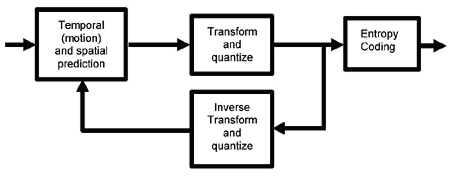
Basic MPEG-2 Encoder Model
Coming to a Big Screen Near You
MPEG-4 AVC has made its first major conquests in satellite video delivery. DirecTV has adopted AVC as the future codec for HD broadcast channels starting in Atlanta, Boston, Chicago, Dallas, Detroit, Houston, Los Angeles, New York, Philadelphia, San Francisco, Tampa, and Washington, D.C. Eventually, all of DirecTV's HD channels will use AVC, although SD channels will continue to use MPEG-2.
EchoStar is also planning to make the transition from MPEG-2 to MPEG-4 AVC on DISH Network sometime in 2006. The same need to fit more channels into limited bandwidth has telecom giants like Bell Canada, BellSouth, and Southwestern Bell interested in using AVC for video-over-DSL services. Even the cable industry is quietly eyeballing the new codec.
Both of the forthcoming high-definition DVD formats, Blu-ray and HD-DVD, have adopted AVC, although not exclusively. They'll also support the Microsoft/SMPTE VC-1 codec and MPEG-2, which remains the industry standard in terrestrial DTV broadcasting and standard-definition DVD-Video.

Basic MPEG-4 AVC Encoder Model Showing Deblocking Filter
Going from MPEG-2 to MPEG-4 AVC raises HD running times from 4 to 8 hours in HD-DVD and from 9 to 15 hours in Blu-ray (using a dual-layer disc in both cases). The Blu-ray disc has greater capacity and supports higher data rates—suggesting (although not conclusively) that AVC may be a more significant player on the HD-DVD side.
High-def DVD will put MPEG-4 AVC to the ultimate test. With existing standard-def DVD, it's possible to use the player's data-rate display to monitor video artifacts as the bits fly by. If the studios release movies in AVC, this rarefied sport will be even more eagerly discussed in online forums. Then we'll get a consensus on exactly how good—or bad—MPEG-4 AVC can look.
Can MPEG-4 AVC scale up to bandwidth-critical big-screen applications while maintaining the picture quality that videophiles have come to expect from MPEG-2? If so, it will speed the penetration of DTV, enabling it to spread into new areas. If it doesn't measure up visually, though, it will degrade the state of the art and confuse the public.
Whatever happens, MPEG-4 AVC will make videophiles more conscious of bandwidth, its limitations, and ways to overcome them. Maybe learning to live within limits is good for the soul.
* Mark Fleischmann is the author of Practical Home Theater (www.quietriverpress.com).



